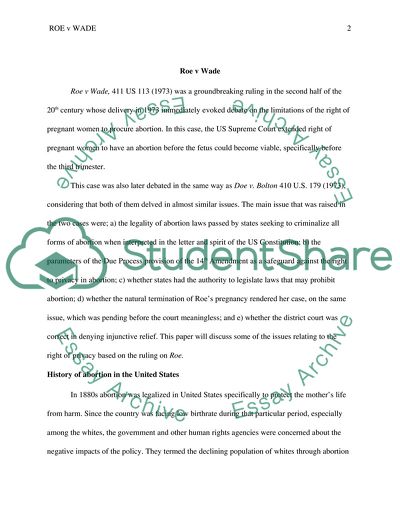Cite this document
(“Roe vs Wade Essay Example | Topics and Well Written Essays - 1750 words”, n.d.)
Roe vs Wade Essay Example | Topics and Well Written Essays - 1750 words. Retrieved from https://studentshare.org/history/1679487-roe-vs-wade
Roe vs Wade Essay Example | Topics and Well Written Essays - 1750 words. Retrieved from https://studentshare.org/history/1679487-roe-vs-wade
(Roe Vs Wade Essay Example | Topics and Well Written Essays - 1750 Words)
Roe Vs Wade Essay Example | Topics and Well Written Essays - 1750 Words. https://studentshare.org/history/1679487-roe-vs-wade.
Roe Vs Wade Essay Example | Topics and Well Written Essays - 1750 Words. https://studentshare.org/history/1679487-roe-vs-wade.
“Roe Vs Wade Essay Example | Topics and Well Written Essays - 1750 Words”, n.d. https://studentshare.org/history/1679487-roe-vs-wade.


